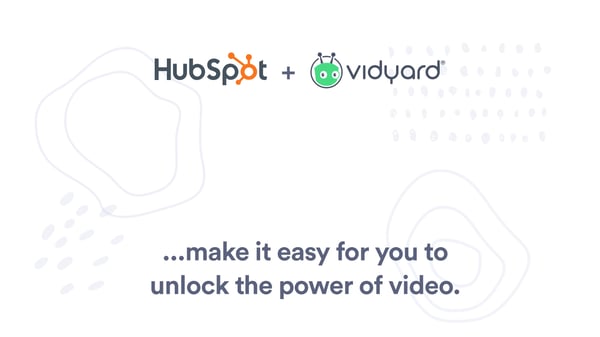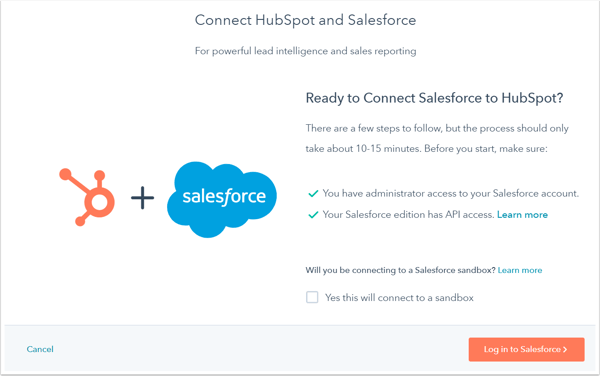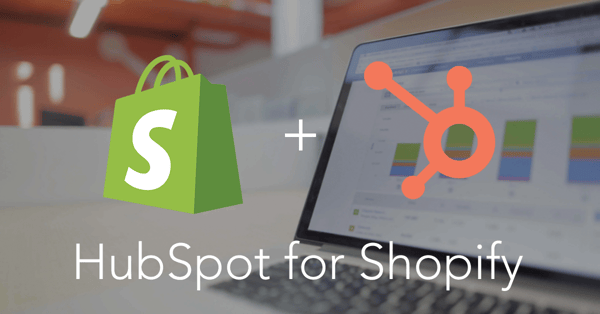4 of the Best HubSpot Integrations You Need for Your Sales and Marketing Team
What separates HubSpot from a lot of other customer relationship management (CRM) platforms is the bank of integrations it offers. Seventeen percent of salespeople cite lack of integration with other tools as the biggest challenge using their existing CRM, so having over 200 integrations available should be enough to convince you why HubSpot is a juggernaut of a platform to consider.
-2-1.jpg?width=600&name=IMG_1336%20(1)-2-1.jpg)
Obviously, we can’t list all 200 here. Instead, we’ve narrowed it down to four integrations your sales and marketing team should use to align their tech stacks, improve their processes and drive further growth.
1. Video - Vidyard
With more focus going on video content than ever before, your sales and marketing teams can unlock the full potential of video in HubSpot with the Vidyard integration. The integration lets your teams use video to create powerful connections at all stages of the customer journey, ranging from generating leads to closing deals to delight your customers - all inside HubSpot.
 Image Credit: Vidyard
Image Credit: Vidyard
How it Helps
The HubSpot and Vidyard integration is more than just your standard reporting you might find in HubSpot Video. It provides advanced video analytics to complement HubSpot Video and also helps with the following:
-
Push actionable video analytics to contact records in HubSpot.
-
Use viewer engagement data to drive smarter marketing by segmenting, qualifying and nurturing leads based on how they’ve interacted with your video content.
-
Automate and optimise your marketing by feeding video data from your videos back into HubSpot to score leads, segment customers and trigger nurture workflows.
-
Personalise and priorities sales follow-ups by focusing on engaged sales opportunities.
-
Push viewer engagement data to contact records in HubSpot so your sales and marketing team know who’s watched what and they can tailor their sales outreach accordingly.
2. Sales - Salesforce
Salesforce is arguably one of the most popular integrations on HubSpot and for good reason. The integration allows for a fast, reliable and powerful integration between both databases so that your sales team is given powerful lead intelligence.
Most importantly, it keeps your sales and marketing teams aligned and their databases in perfect harmony.
 Image Credit: HubSpot
Image Credit: HubSpot
How it Helps
With Salesforce and HubSpot being two of the most powerful CRMs around, it’s no surprise that there’s an integration available for your teams to benefit from. The integration unifies both platforms to enrich your marketing database with critical sales date so your teams can perform cross-channel reporting and gain much better visibility.
-
With a powerful bi-directional sync, changes in one system are automatically synced to the other.
-
Your teams can choose which new records sync from HubSpot to Salesforce and when.
-
You can automatically send important lead intelligence, such as form submissions, email opens, website activity and more, to your sales teams so they have valuable lead data to close more leads.
-
The integration lets you send lead scores from HubSpot to Salesforce to help your sales team prioritise their outreach which saves plenty of time.
-
Use details from Salesforce contacts and accounts to personalise marketing emails, segment your database and send emails on behalf of a lead’s assigned sales rep.
-
As your sales team close more leads as customers, Salesforce sends revenue data from closed-won opportunities right into HubSpot. This lets them tie specific marketing campaigns to real revenue.
To find out how you can integrate HubSpot and Salesforce in eight easy steps, check out this blog.
3. Email - MailChimp
HubSpot helps you manage and grow your sales pipeline by enriching leads, tracking leads, making calls and much more. MailChimp helps you manage your mailing lists, send brilliant emails, track results and more. So, it makes complete sense to integrate the two to really drive business growth.

How it Helps
So once your teams have collected their leads, the next important step is to obviously start a conversation with them. The best way to do that is by syncing a brilliant CRM with a powerful email service provider.
-
The integration helps to engage with your contacts as HubSpot lets you fill your CRM with website visitors through lead flows and collected form tools.
-
Your sales and marketing team can quickly create lists from conversion points and start building out email campaigns.
-
By connecting HubSpot to MailChimp, you can easily add your HubSpot contacts to MailChimp lists which is beneficial if a lot of your customers use and are familiar with MailChimp.
-
Your teams are able to create their own integration using trigger and action lists.
-
Despite the integration being airtight, HubSpot is on hand to provide your teams with all of the details if problems arise so they can continue engaging your contacts.
4. Ecommerce - Shopify
The HubSpot and Shopify integration makes it easier than ever to bring HubSpot’s power and insights to Shopify. Your teams will be able to see online sales in HubSpot as deals, organise and analyse purchasing patterns and even measure customer lifetime value.
The combined power of HubSpot and Shopify gives your teams the perfect tools they need to build much more sophisticated ecommerce marketing strategies.
 Image Credit: HubSpot
Image Credit: HubSpot
How it Helps
The HubSpot-built Shopify integration blends inbound into your teams’ marketing strategies. It helps to generate more traffic, build a brand your market loves and increases revenue from your existing customer base.
-
Syncing the two turns store data into powerful sales and marketing signals in HubSpot and creates a single view of your customers for all of your teams.
-
Your teams can personalise and integrate to upgrade your growth strategy with new tactics like abandoned cart email nurturing, smart CTAs in content and more.
-
Using the full capabilities of HubSpot, your team can build a brand voice to help you stand out.
-
The integration allows your teams to bring in specific sales data from Shopify stores such as customers, orders, products and more into the HubSpot platform.
See More on How HubSpot Can Boost Your Enterprise Inbound Marketing Efforts
As we said, listing 200+ integrations here wouldn’t be smart, but these four integrations are a great starting point to look into as they can all help drive further business growth. The next step is to know how you can utilise these integrations and features so you can manage your campaigns effectively at scale.
To take your campaigns to the next level, check out our Inbound for Enterprise eBook so you can deliver ambitious growth. From what to consider when it comes inbound right through to using HubSpot effectively, we’ve covered it all.
Grab your copy by clicking the link below.
Real Growth. Real Impact.
'Should I use HubSpot?' 32 fundamental reasons why you should
Interviewing an AI version of HubSpot's founder was weird
Avidly named HubSpot EMEA and APAC Partner of the Year
Transforming content strategies: Avidly earns HubSpot Content Experience Accreditation
21 cost-effective marketing campaigns you can create right now
JD Sherman shares HubSpot's key growth factors and the future of AI | Avidly Talks: Marketing | Ep 124
Breeze: Everything you need to know about HubSpot's powerful AI
See why enterprises chooseAvidly
Let’s build your HubSpot success story
Compelling final call to action - with accompanying link to Contact page







